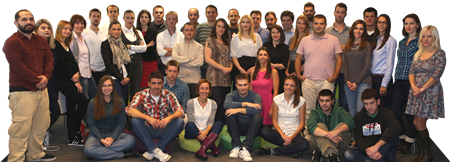Endoscopic Ultrasound
| Cena: |
| Želi ovaj predmet: | 1 |
| Stanje: | Nekorišćen |
| Garancija: | Ne |
| Isporuka: | Pošta CC paket (Pošta) Post Express Lično preuzimanje |
| Plaćanje: | Tekući račun (pre slanja) PostNet (pre slanja) Pouzećem Lično |
| Grad: |
Novi Sad, Novi Sad |
Oblast: Ostalo
ISBN: Ostalo
Godina izdanja: 2006
Jezik: Engleski
Autor: Strani
Endoscopic Ultrasound
An Introductory Manual and Atlas
Editor
Christoph Frank Dietrich
Why it`s done
EUS helps diagnose conditions that affect the digestive tract and nearby organs and tissues. An EUS tube placed down the throat captures images of the esophagus, stomach and parts of the small intestine. Sometimes an EUS tube is placed through the anus, which is the muscular opening at the end of the digestive tract where stool exits the body. During this procedure, EUS captures images of the rectum and parts of the large intestine, which is called the colon.
EUS can capture images of other organs and nearby tissues too. They include:
Lungs.
Lymph nodes in the center of the chest.
Liver.
Gall bladder.
Bile ducts.
Pancreas.
Sometimes, needles are used as part of EUS-guided procedures to check or treat organs near the digestive tract. For example, a needle can pass through the wall of the esophagus to nearby lymph nodes. Or a needle can pass through the wall of the stomach to deliver medicine to the pancreas.
EUS and EUS-guided procedures may be used to:
Check damage to tissues due to swelling or disease.
Find out if cancer is present or has spread to lymph nodes.
See how much a cancerous tumor has spread to other tissues. A cancerous tumor also is called a malignant tumor.
Identify the stage of the cancer.
Provide more-detailed information about lesions found by other imaging technologies.
Take out fluid or tissue for testing.
Drain fluids from cysts.
Deliver medicine to a targeted region, such as a cancerous tumor.
Izdavač: Thieme
Povez: tvrd
Broj strana: xii, 395
Knjige ne šaljem u inostranstvo, tj. šaljem samo po Srbiji.
Poštovani kupci, knjige šaljemo odmah nakon dogovora o transakciji.
Na područuju Novog Sada je moguće lično preuzimanje, svim danima.
Ne ustručavajte se da postavite pitanje ukoliko Vas nešto zanima. Svima nam je u interesu uspešna transakcija!
Ne mogu biti odgovorna za moguća oštećenja nastala rukovanjem knjiga u pošti. Šaljem knjige po datom opisu i fotografiji.
Ovom prilikom Vas pozivam da pogledate ostatak moje ponude gde možete naći najrazličitije naslove, počev od beletristike, preko enciklopedija i priručnika, knjiga za decu, medicinskih knjiga i ostale stručne literature.
https://fetfreak.kupindo.com
https://fetfreak.kupindo.com/moj-ducan
Predmet: 79167217















